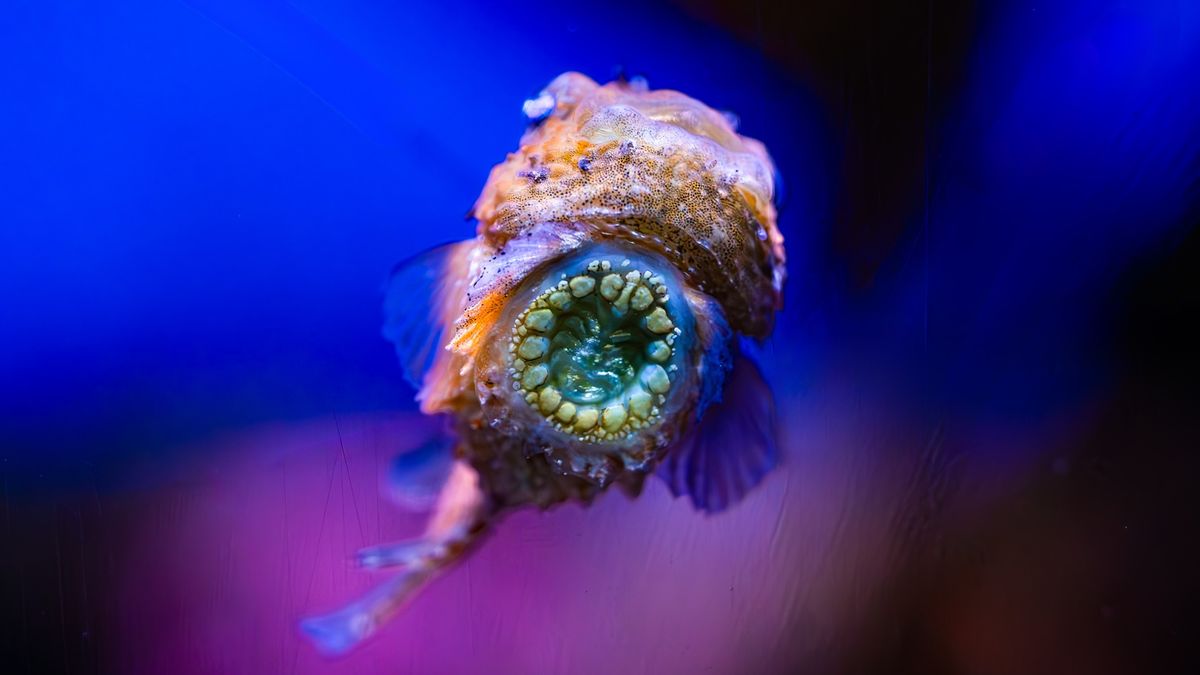QUICK FACTS
Name: Pacific spiny lumpsucker (Eumicrotremus orbis)
Where it lives: Northern Pacific, from Washington to Japan and north into the Bering Sea
What it eats: Small fish, jellyfish, ctenophores, crustaceans, polychaetes
Pacific spiny lumpsuckers’ tiny, plump bodies and adorable appearance make them essentially wild kawaii. They are awkward swimmers, so to avoid being swept off by currents in their coastal homes, their pelvic fin has evolved to act as a suction cup, enabling them to anchor themselves to a stable surface.
At just 1 to 3 inches (2.5 to 7.6 centimeters) long, they are the smallest of the 27 species of lumpsuckers, also called lumpfish, some of which can grow as long as two feet (61 cm). Lumpfish are in the same order, Scorpaeniformes, as blobfish, sea robins and stonefish.
Pacific spiny lumpsuckers are small, globular fish with extra-small fins which they flap wildly to get around. It makes them able-but-awkward swimmers. Living close to the coast and facing the pulls of tides and strong currents, their pelvic fins are fused to form a surprisingly strong sucker disc which lets them attach to rocks, coral or kelp, and, in aquariums, even to the side of a tank.

These sucker discs are a bit fearsome to look at from the underside – like a lamprey with a circle of human teeth. That’s because, like our teeth, those of the Pacific spiny lumpsucker are made from enamel. The disc also emits a green and yellow glow — though the reasons for this are not known.
Males are usually red (see “concerned strawberries”) and glow red under ultraviolet light, while females are usually green to brown and don’t glow under UV rays.
When it’s time to reproduce, only the males settle down. They stake out a territory, usually a shallow depression in warmer water where the females lay their eggs. The male fertilizes them and then she leaves and he tends to and guards the next generation from predators.Young lumpsuckers don’t yet have a defense the adults have — rows of enamel bumps called odontodes covering their bodies, including that toothy-looking circle on their undersides.
Eventually, they will grow odontodes in spiral rows all around their bodies to protect them against predators and collisions with rough surfaces.




